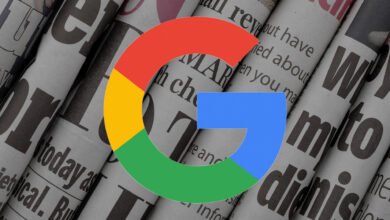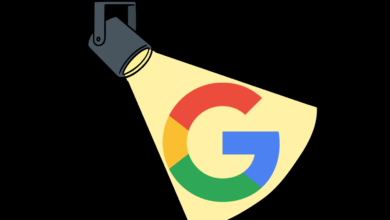Google’s AI Max: 30-Day Search Test Results Revealed

▼ Summary
– AI Max is an optional Google Search campaign feature that uses machine learning to show ads based on user data like search history and demographics, not just keywords.
– It differs from Performance Max by focusing only on Search, allowing exclusions of Search Partners and Display, and enabling brand controls exclusively for AI Max.
– AI Max is recommended for ecommerce to generate incremental revenue but should be avoided by new or small accounts without sufficient conversion data.
– Human marketers remain essential for strategy, ad copy, landing pages, and troubleshooting, as AI Max is an optional tool that doesn’t replace human expertise.
– Early testing shows AI Max can yield high returns with controlled spending, but it’s still in beta and requires cautious experimentation due to limited reporting.
Exploring Google’s AI Max reveals a powerful new tool for search campaigns, offering advertisers a chance to tap into expanded audience targeting through advanced machine learning. This optional feature moves beyond traditional keyword matching, allowing ads to reach users based on a wide array of signals like past search behavior, demographic details, and even website content. Initial 30-day tests across multiple accounts show promising results, particularly for ecommerce, though its suitability varies by campaign type and account maturity.
Reactions to AI Max have been mixed, as often happens with Google’s updates. Some advertisers welcome the innovation, while others remain skeptical. The truth, however, lies somewhere in the middle. Rather than relying on speculation, real-world testing provides clearer insights into its performance and potential.
AI Max functions as a toggle within Search campaigns, unlocking what Google describes as “the full potential of Google Search.” It enables the platform to serve ads to individuals who may not be actively searching for specific terms but are identified by algorithms as likely prospects. This approach extends the concept of broad match targeting by incorporating factors such as historical search intent, user attributes, and other data points only accessible to Google. Additionally, AI Max can display ads for keywords it deems relevant based on your site’s content and landing pages.
A common question is how AI Max differs from Performance Max and Dynamic Search Ads (DSA). Performance Max operates as a standalone campaign across multiple Google channels, offering minimal keyword control. DSA, the oldest of the three, generates ad copy directly from landing pages. In contrast, AI Max creates new ad copy algorithmically and allows exclusions for Search Partners and Display, a level of control not available in Performance Max.
Brand controls for Search are now exclusive to AI Max, meaning features like brand inclusions and exclusions require its use. This isn’t necessarily a drawback, especially since branded terms typically perform best in dedicated Search campaigns.
Key distinctions between AI Max and Performance Max include campaign structure and control. AI Max can be enabled or disabled within existing Search campaigns, while Performance Max is a separate campaign type covering Shopping, Display, YouTube, and Gmail. Both rely on algorithms, making them similar in some respects. However, AI Max’s focus on Search and its exclusion options provide advertisers with more flexibility.
Spam can be a concern with form submissions, so using AI Max for call-based conversions is often safer. Ecommerce brands, less affected by spam, may find AI Max particularly advantageous. Both AI Max and Performance Max can match with irrelevant queries, potentially impacting lead quality. For lead generation, it’s wise to use AI Max only when qualified CRM data is fed back into Google via offline conversion imports.
Determining when to use AI Max depends on your account’s situation. Ecommerce businesses should consider testing AI Max for incremental revenue. Even if initial spending yields no immediate returns, the potential upside outweighs the risk. For lead generation, AI Max is worth exploring only with robust CRM integration. Mainstream niches with high search volumes, like home decor, may also benefit from expanded targeting.
New accounts or those spending only a few thousand monthly should avoid AI Max until they achieve consistent conversion history, typically at least 30 conversions per month over several months. Regulated industries, such as pharmaceuticals, must exercise caution and seek legal guidance before testing.
In one ecommerce example, a digital camera retailer using AI Max saw $52,486 in additional revenue from just 23 orders, despite a modest spend of around $3,800. This resulted in an impressive 14:1 return, demonstrating AI Max’s potential to outperform conventional keyword strategies.
Human expertise remains crucial despite AI advancements. Marketers are needed to develop strategy, craft compelling ad copy, optimize landing pages, and manage multi-channel experience loops. AI Max is an optional tool, not a replacement for skilled decision-making.
Early lessons from testing indicate that AI Max shows promise, possibly more than Performance Max did at launch. Advertisers would benefit from more detailed reporting on targeting rationale. Currently, AI Max appears to deliver higher-quality output than other algorithmic tools, without excessive spending. While a Performance Max mindset can guide AI Max strategy, success with one doesn’t guarantee results with the other.
As AI Max is still in beta, expect ongoing refinements. Allocate a portion of your budget for careful testing to avoid overextension. This measured approach helps manage risk while exploring new opportunities for growth.
(Source: Search Engine Land)




